Why magic mushrooms and mycelium turned blue and bruised
What is mushroom bruising
Fist of all, it is not contamination! This reaction is of great interest to chemists. Because exact cause of mycelium bruising is still not well studied yet.
It is believed the main cause of mycelium and mushrooms bruises is oxidize. As you know, magic mushrooms contain psilocybin and psilocin. These are the main alkaloids.
In the presence of oxygen psilocybin is more stable. But psilocin readily forms bluish and dark-blue decomposition products. The bluish reaction or bluish-green is obvious in the most potent species. The less psilocin there is in a species, the more subtle the bluish reaction.
Bruising is the reaction between psilocin and oxygen. It’s not contamination!
Such mushroom reactions could be on the mycelium and on the fruit bodies. Blue color, blue-green or even black bruises is one of the signs of psilocybin mushrooms.
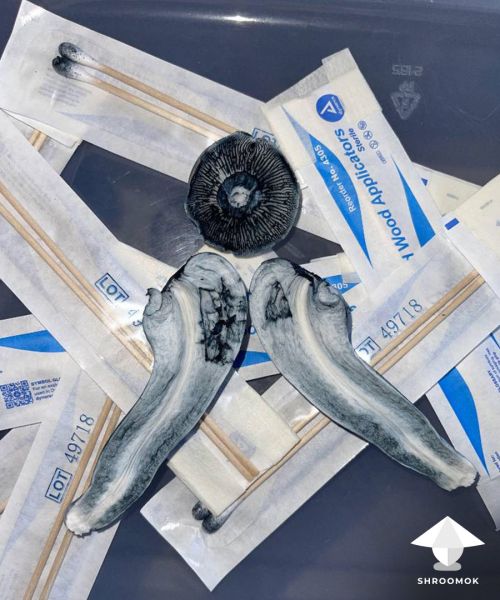
It is also found out that not only exposure to oxygen cause mycelium or mushrooms bruises. Another cause for the mycelium bruising is believed to be the presence of a metal ion like copper in the mycelium. This may be the reason why some non-psychoactive mushrooms get bruised as well
Why bruises appear during fruiting period
Bruising is a result of mechanical impact, when cell walls of mycelium or mushroom tissue are damaged
🔵 If you touch the mushroom body or mycelium
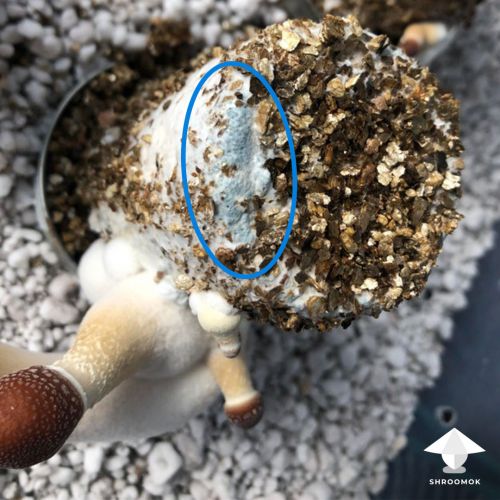
🔵 After shaking the jar/bag with mushroom spawn
🔵 Hard misting. Water drops rolled down the mushroom body and influence the mushroom tissue or mycelium
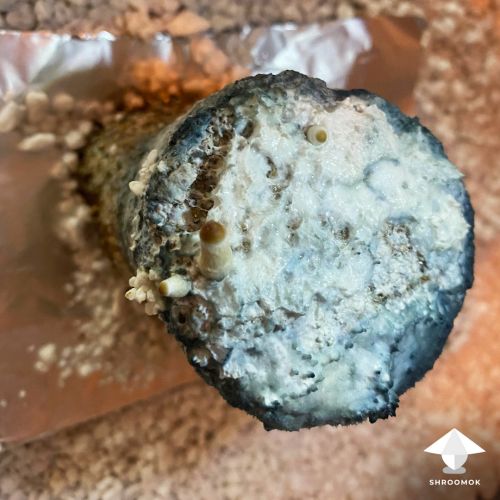
🔵 Hard fanning, when air currents can irritate mushrooms or mycelium
Real case: My fungi and mycelium turned a blue color about 2 hours after I misted them and lightly fanned. What’s going on here?
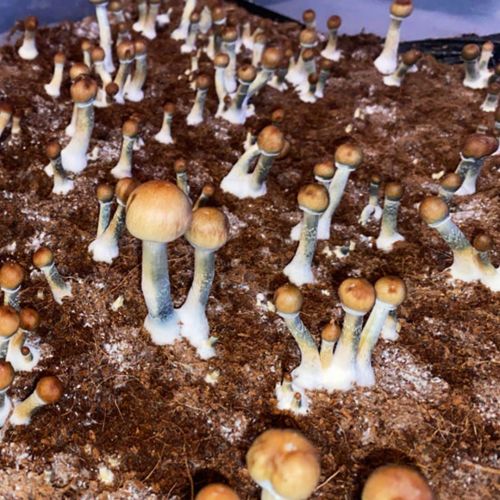
This case is a good example of hard fanning and misting. You can see bruises from the one side of mushroom stem, where air flow or water spraying irritated mushroom "skin"
🔵 Extreme bruising is normally found on harvested mushrooms, their stems and stumps
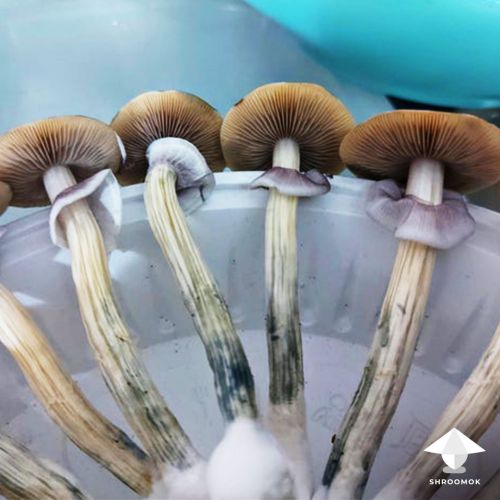
🔵 Bruising because cake and mycelium dehydrated or after water puddles on top layer. In this case mycelium dry out, loses its flexibility and becomes "brittle". Dehydration bruising is often widespread on the mycelium or around the base of pins and around the base of mushrooms

🔵 Mycelium bruises on agar, when you cut a piece of mycelium for agar transfer

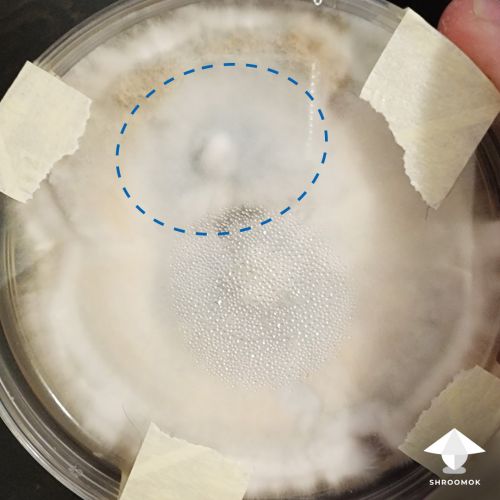
🔵 Bruises on dry mushrooms
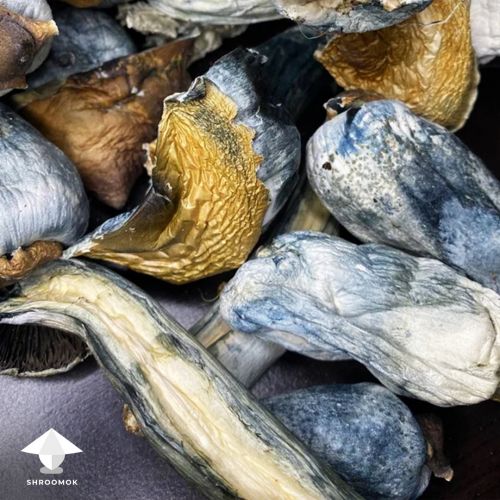
Is bruised mycelium and mushrooms bad
Bruising is not contamination. But it is often bruised damaged parts of the mycelium won't produce mushrooms. Sometimes mycelium can recover damaged parts. The parts of the mycelium which aren't damaged can still be producing healthy mushrooms.
Extreme bruising on mushroom bodies during fruiting period influences their development and potency.
Bruising during picking/harvesting mushrooms is impossible to avoid and this is absolutely normal!
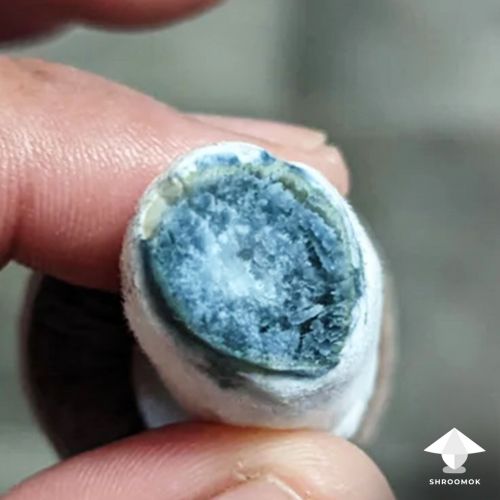
How to avoid and what to do with mycelium bruising
🔷 Be gentle with your mycelium and mushrooms. They are super sensitive!
🔷 Don’t touch mushrooms and mycelium during fruiting period
🔷 Don’t spray on the mycelium and mushrooms directly! If you maintain high humidity of the fruiting chamber by spraying it with water, spray on the walls of the tub only. Use ultra fine mister
🔷 Don’t turn on the fan very hard. It will be enough to open your tub for 5 minutes or use PC fan on slow mode and gently introduce fresh air
🔷 In case of mycelium bruising because of dry mycelium your mushroom cakes need rehydration and proper relative humidity in fruiting chamber (not less than 90%)
Difference between Mycelium Bruising and Mold Contamination
Bruises and Green mold Trichoderma
It's always confused newbie growers, because green mold Trichoderma spp. (T. harzianum, T. viride, T. koningi) have white then green color
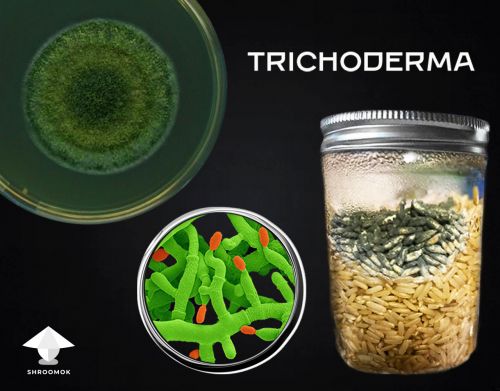
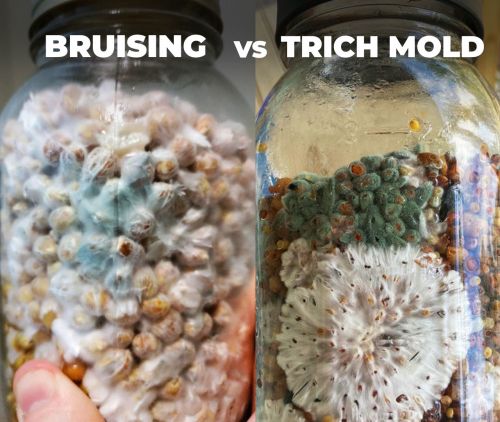
All in one: mycelium bruising (blue) and trich mold (green) on mushroom cake
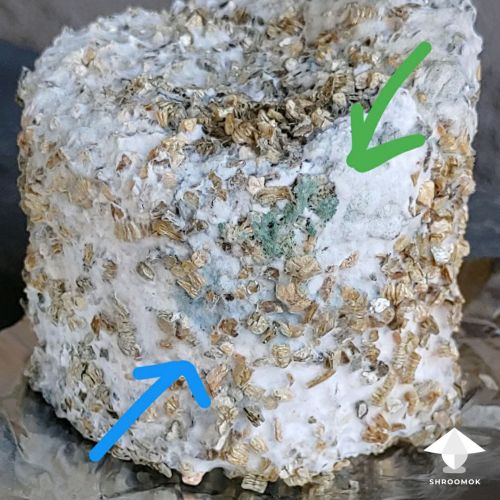
🔴 All about Green Mold: Green mold contamination aka Trichoderma
Bruises and blue-green mold Penicillium
Blue-green mold Penicillium spp. also have blue-green color
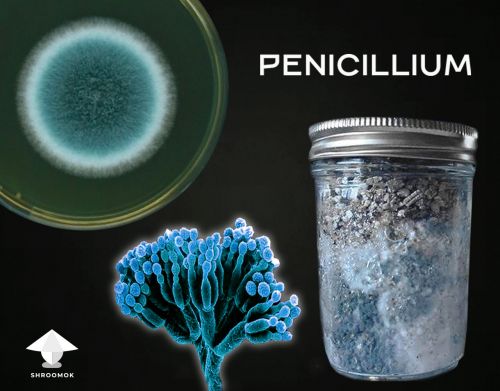
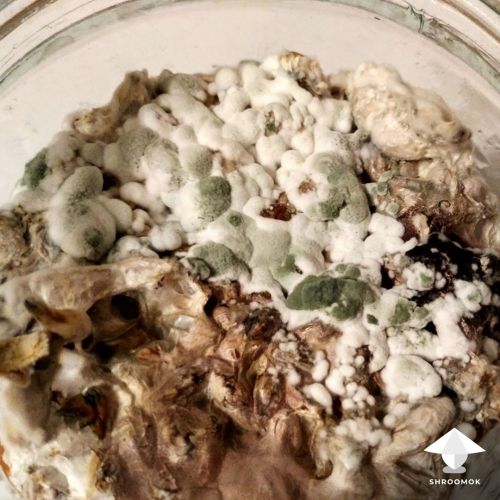
❗️Remember, the main hallmark of molds (Trich, Penicillium) is a powdery and/or marshmallow texture
Bruising on mycelium that hard to identify
Bruised not contaminated mycelium can also have greenish tinge. Here was the most difficult case for identification bruises, take a look!
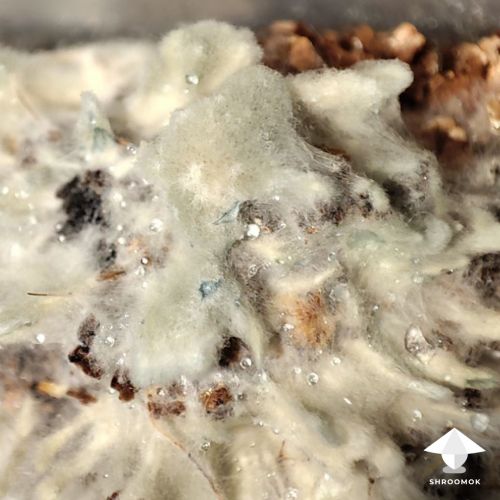
From this photo (another side, same area) much easier to identify mycelium bruises. Here you can see mushroom mycelium threads turned blue, without powdery or marshmallow texture
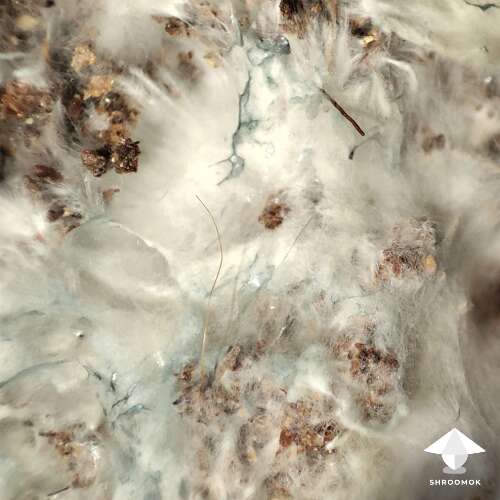
Q-Tip Test or Swab Test for mold identification
Q-tip test isn't scientific test, but popular lifehack among newbie mushroom growers.
Swab test can be used to determine whether your mycelium is just bruised or contaminated with mold (green mold Trichoderma spp. or blue mold Penicillium spp). This test is possible to use during fruiting period only. The test is based on the fact that mold spores are sticky and would be stuck on any surface that comes into contact.
To do this you have to take a clean white cotton swab or a fresh Q-tip and swipe it across the contaminated area. If your cotton swab rubs the blue or green powder on to it, it is highly likely that you are looking at a Trich or Penicillium contamination. If your cotton swab comes out clean without any color on it, your mycelium may be simply bruised.
Check out more photo examples of different contaminations and cultivation issues in 📸 Growing Problems photo gallery
Join Shroomok Community on Discord and Reddit for questions and sharing experience.
You can also leave your comments on this page below ⬇️
If you find this guide helpful, please support me with a cup of coffee on ☕️ buymeacoffee
Have a happy growing and healthy shrooms!
Peace, Shroomok ❤️


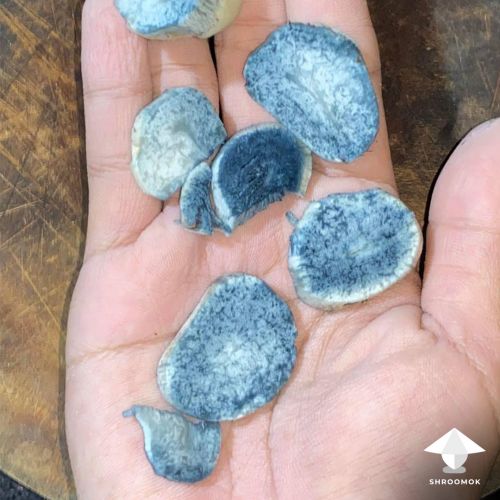
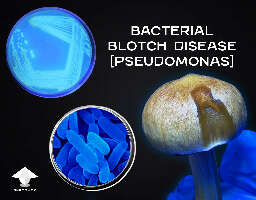
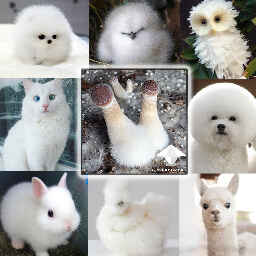
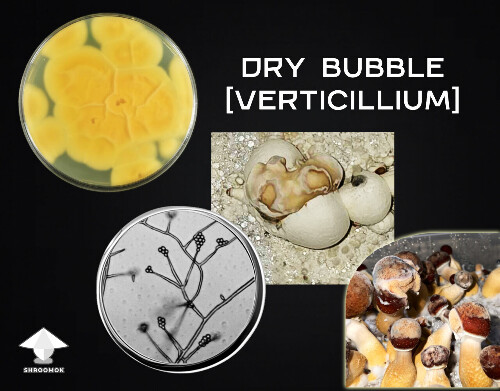
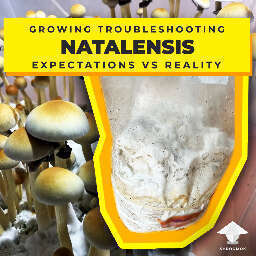
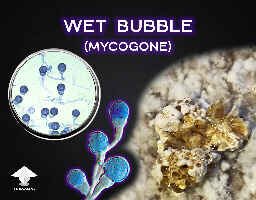
Comments
Add comment